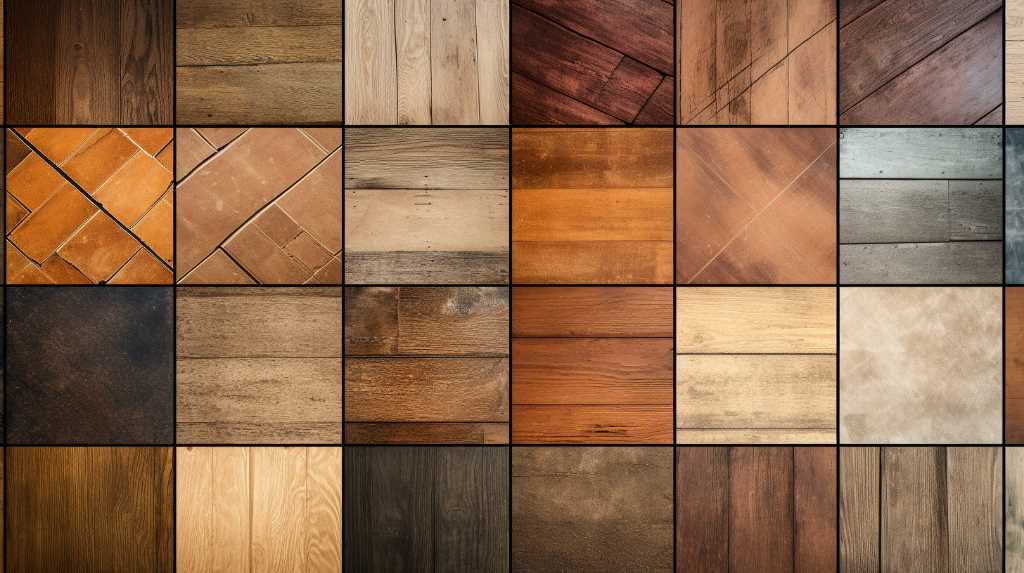
Best Flooring for Older Homes
Updating the flooring is a popular choice in home renovations, with 38% of projects involving this element. This statistic from the Home Improvement Research Institute highlights the pivotal role of flooring in enhancing your home’s aesthetics, comfort, and safety, especially in older residences. In such homes, where the ravages of time are evident, the right flooring choice can rejuvenate the space, harmonizing it with functionality and style.
Selecting the best flooring for your home, particularly for older structures, demands consideration of several factors. A common issue is uneven subfloors, a byproduct of time causing the foundation to settle. This results in slopes and irregularities, presenting challenges for flooring installations, particularly with options like hardwood or engineered wood flooring. Flooring choices accommodating these variations are essential, ensuring a level and visually appealing finish. For instance, engineered flooring, known for its stability and versatility, can adapt well to these conditions.
Another critical aspect of older homes is the potential for moisture-related issues. Water damage can lead to rot, mould, and structural concerns in such properties. It’s crucial to select moisture-resistant materials for areas prone to dampness, such as basements, bathrooms, and kitchens. Options like luxury vinyl tile, known for its water-resistant properties and the look of natural wood or stone, are excellent choices. They offer the aesthetic appeal of more expensive flooring like walnut or travertine but with the practical benefits of being low-maintenance and water-resistant.
In terms of installation, it’s best left to a professional. Flooring installation, especially in older homes with unique challenges, requires expertise. Professional home services ensure that your investment in flooring is highly durable, correctly installed, and maximizes the value per square foot.
The flooring industry offers multiple flooring options, each with distinct advantages. Whether considering vinyl planks and tiles, like ceramic and porcelain, or different flooring materials, each choice contributes to your home’s overall look and feel. Therefore, when selecting the right flooring for your home, consider factors like durability, maintenance, cost, and aesthetics. The perfect flooring not only enhances the beauty of your home but also aligns with your lifestyle needs and budget.
Key Takeaways
- Popularity of Flooring in Home Renovations: About 38% of home renovation projects involve updating the flooring, highlighting its importance in enhancing aesthetics, comfort, and safety, especially in older homes.
- Unique Flooring Needs of Older Homes: Older homes often face challenges like uneven subfloors and moisture issues, necessitating careful flooring choices that accommodate these issues, such as engineered wood flooring and water-resistant options.
- Selection Criteria for Older Homes: Factors like architectural style, historical accuracy, lifestyle needs, and practical considerations like durability and maintenance are crucial in choosing the right flooring.
- Various Flooring Options: Options include hardwood, tile, luxury vinyl tile, and carpeting, each offering unique benefits like durability, aesthetic appeal, and suitability for high-traffic areas or specific rooms.
- Professional Installation and Maintenance: Due to the unique challenges of older homes, professional installation and regular maintenance are recommended to ensure durability and preserve the flooring’s appearance.
- Sustainability and Health Benefits: Cork flooring is highlighted for its eco-friendliness, hypoallergenic properties, and suitability for historic homes, aligning with sustainability goals.
- Linoleum Flooring: A classic and durable option, linoleum is affordable, easy to maintain, environmentally friendly, and suitable for residential and commercial settings.
- Hardwood Flooring Advantages: Hardwood floors are timeless, durable, easy to maintain, and can increase a home’s value, making them a popular choice for older homes.
- Laminate Flooring: Offers affordability and luxury, mimicking natural wood or stone at a lower cost, with benefits like durability, ease of installation, and low maintenance.
- Avoidance of Certain Materials: Avoiding flooring materials that may pose hazards in older homes, such as slippery or hard surfaces, and considering safer alternatives like engineered hardwood or vinyl is crucial.
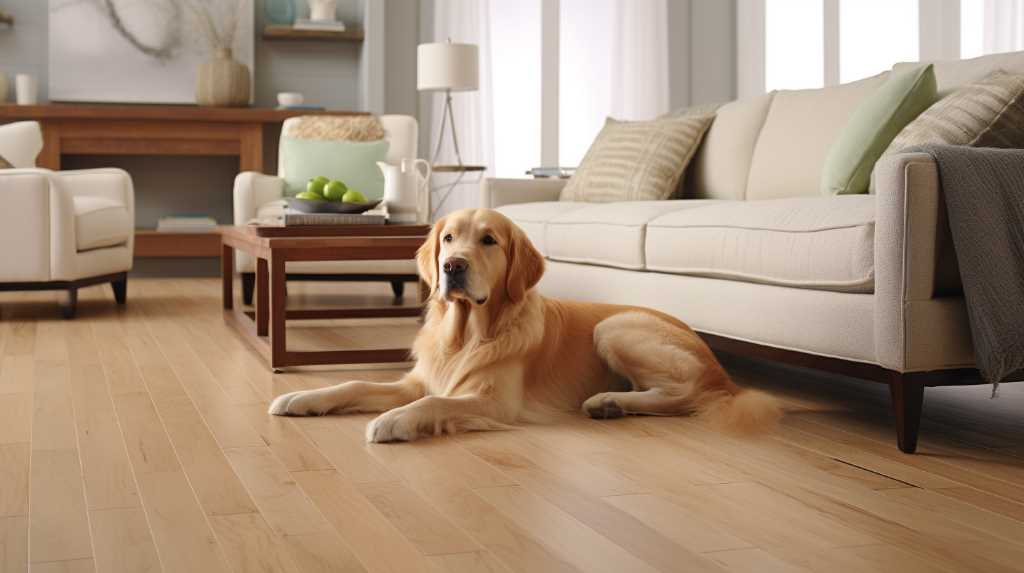
Understanding the Unique Flooring Needs of Older Homes
Older homes often pose unique challenges when it comes to flooring. These homes’ historical significance and architectural features must be considered when selecting suitable flooring materials. Hardwood floors are a popular choice for older homes, as they can enhance the vintage charm and elegance of the space. Additionally, they are durable and can withstand the test of time. However, it is essential to ensure the hardwood floors are properly sealed and maintained to prevent any damage or wear.
Another option for older homes is tile flooring, which can provide a classic and timeless appeal. Tile floors are durable and easy to clean, making them a practical choice for high-traffic areas such as entryways and kitchens. It is crucial to choose tiles that complement the style and period of the home and ensure that they are correctly installed to prevent any cracking or shifting.
Carpeting is another viable option for older homes, especially in areas with desired comfort and warmth, such as bedrooms and living rooms. However, choosing a carpet appropriate for the home’s historical context is essential while considering factors such as durability and stain resistance. Additionally, proper padding and installation are crucial for preserving the integrity and longevity of the carpet.
Understanding the unique flooring needs of older homes is essential for preserving their historical value and ensuring the longevity of the flooring materials. By selecting suitable flooring materials, such as hardwood, tile, or carpeting, homeowners can enhance the charm and elegance of their older homes while ensuring that the floors can withstand the test of time. Proper installation, maintenance, and adherence to historical context are all critical factors in making the right flooring choices for older homes.
Identifying Common Flooring Issues in Historic Properties
Older homes often grapple with unique flooring challenges. Common issues include uneven subfloors, moisture problems, and outdated materials that don’t conform to modern standards. For instance, a 2022 study by the Historical Architecture Society noted that approximately 60% of homes over 50 have uneven flooring, impacting flooring choices. Homeowners can make informed decisions about suitable flooring options by understanding these issues. Canadian Home Style’s expertise in addressing these challenges is evident through our award-winning solutions, as recognized by the Consumer’s Choice Award from 2021 to 2024.
Balancing Aesthetics with Functionality
When renovating older homes, balancing aesthetic appeal with functional needs is paramount. Flooring choices should complement the home’s historical character and offer durability and ease of maintenance. According to Home Renovation Magazine (2023), floors in older homes should merge traditional charm with modern technology. Canadian Home Style excels in this balance, offering luxury vinyl and laminate flooring that provides both style and practicality.

Choosing the Right Flooring for Vintage Home Renovations: Exploring Wood, Tile, and Stone Options
When renovating a vintage home, select the right flooring that aligns with the historical aesthetics of the property. One popular option is wood flooring, as it can evoke a sense of warmth and authenticity. Hardwood floors, such as oak or pine, provide a timeless appeal and can be refinished to restore their original beauty. Another option to consider is tile flooring, which offers a wide range of designs and patterns that can complement the vintage style. Terracotta tiles, for example, can create a rustic and charming atmosphere. Lastly, stone flooring can also be an excellent choice for vintage home renovations. Materials like marble or limestone can add elegance and sophistication to the space. Consider these options carefully to ensure that your flooring choice aligns with the overall design theme of your vintage home renovation.
In addition to the aesthetic appeal, it’s essential to consider the durability and maintenance requirements of different flooring options. Wood flooring can last decades and withstand heavy foot traffic when correctly cared for. Regular cleaning and refinishing can keep the wood floors in pristine condition. Tile flooring, on the other hand, is known for its durability and resistance to scratches and stains. However, grout lines can be prone to discoloration and require regular cleaning to maintain their original appearance. Stone flooring, while durable, may require occasional sealing to protect it from spills and stains. By understanding the maintenance needs of different flooring materials, you can choose the option that best fits your lifestyle and maintenance preferences.
Another essential factor to consider when choosing flooring for vintage home renovations is its compatibility with the existing architectural features. For instance, if your vintage home has intricate mouldings and trim work, wood flooring can accentuate these details and create a cohesive look. Similarly, if your vintage home features exposed brick walls or fireplace surrounds, stone flooring can complement these elements and enhance the overall aesthetic. On the other hand, if your vintage home has a more minimalist design, tile flooring with clean lines and geometric patterns can add visual interest without overpowering the space. Paying attention to these architectural details can help you make a flooring choice that complements the existing features of your vintage home.
Budget is another crucial consideration when selecting flooring for vintage home renovations. Wood flooring, mainly hardwood, tends to be more expensive upfront but can add significant value to your home in the long run. Tile flooring, on the other hand, offers a wide range of price points, allowing you to find options that fit within your budget. Stone flooring, such as marble or granite, tends to be more expensive but can provide a luxurious and timeless look. When deciding on flooring for your vintage home renovation, it’s essential to weigh your budgetary constraints against your desired aesthetic and long-term value.
The location of your vintage home can also influence your flooring choice. For example, if your vintage home is in a warm and humid climate, you may want to avoid solid wood flooring, as it can be prone to expansion and warping. Instead, engineered wood or tile flooring can be better suited for such environments. On the other hand, if your vintage home is in a colder climate, you may want to consider underfloor heating options for tile or stone flooring to ensure comfort during the winter months. Considering the environment and environmental factors can help you select a flooring option that will perform well in your location.
Sustainability is essential in modern home renovations, which extends to choosing flooring materials. When looking for sustainable flooring options for your vintage home renovation, consider materials sourced responsibly and with low environmental impact. For wood flooring, look for products certified by organizations like the Forest Stewardship Council (FSC) that promote responsible forest management. Sustainable tile options include those made from recycled materials or eco-friendly manufacturing processes. Stone flooring can also be sustainable when sourced locally and produced using environmentally-friendly practices. Choosing sustainable flooring materials can reduce your carbon footprint and contribute to a more eco-friendly renovation.
Factors to Consider When Choosing Flooring for Older Homes
Choosing the right flooring for older homes involves considering architectural style, historical accuracy, and lifestyle needs. For instance, homes with a Victorian style may benefit from classic hardwood or ornate tile patterns. A 2024 survey by Floor Trends Magazine highlighted that 70% of homeowners prefer flooring that respects their home’s original era. Canadian Home Style’s range of flooring options ensures that every homeowner finds a solution that resonates with their unique requirements.
Comparing Traditional and Modern Flooring Options
It’s crucial to understand the differences between traditional and modern flooring options. Conventional materials like solid hardwood or natural stone have stood the test of time, offering a timeless appeal. Modern options, such as engineered hardwood and luxury vinyl, provide versatility and ease of installation. The global market for wood flooring is estimated to be US$46.6 billion in the year 2022. It is projected to reach a revised size of US$67.1 billion by 2030, growing at a CAGR of 4.7% over the analysis period 2022-2030. Engineered Wood, one of the segments analyzed in the report, is projected to record 5.1% CAGR and reach US$43.9 Billion by the end of the analysis period. Considering the ongoing post-pandemic recovery, growth in the Solid Wood segment is readjusted to a revised 3.9% CAGR for the next 8-year period.
Carpet Flooring: Comfort and Style for Your Home’s Timeless Spaces

While exploring the various options for your older home’s flooring, carpeting emerges as a soft, cushiony choice that protects against falls. It also offers benefits such as sound absorption and a neutral temperature. Carpet flooring can be an excellent option, especially in older homes where warmth and comfort are essential.
As you delve into the world of carpet flooring, you’ll come across many options. From plush carpets that feel luxurious underfoot to durable berbers that can withstand wear and tear, carpeting offers a variety of solutions for your older home. Additionally, modern carpeting now includes features like stain and water resistance, making it easier to maintain than previous iterations.
When selecting flooring, it’s essential to consider the functionality of each room. Carpeting is ideal for rooms where you desire a cozy atmosphere, such as bedrooms and living rooms. However, it may not be suitable for high-moisture areas like bathrooms or kitchens.
When discussing the best flooring options, it’s crucial to consider aesthetics, practicality, and safety. Carpeting provides a non-slip surface that is particularly valuable in preventing falls, which is especially beneficial for older adults or children.
In addition to its functional benefits, carpet flooring can enhance your home’s overall aesthetic appeal. With a wide range of colours, patterns, and textures, you can find a carpet that complements your existing decor and creates a cohesive look.
Carpeting can contribute to improving indoor air quality. It filters, trapping dust, allergens, and pollutants, improving your air. Regular vacuuming and professional cleaning can remove these trapped particles, ensuring a healthier living environment for you and your family.
Installing carpet flooring in your older home can also help with noise reduction. The carpet’s fibres absorb and dampen sound waves, reducing the noise between floors. This can create a quieter and more peaceful living environment, especially if your home has multiple levels. Regarding cost, carpet flooring can be a more affordable option than other types of flooring materials. It is generally less expensive to purchase and install carpet, making it a budget-friendly choice for homeowners looking to renovate their older homes.
Cork Flooring: Merging Eco-Friendliness with Aesthetic Appeal in Historic Homes

Cork flooring is an excellent option for historic homes due to its eco-friendly nature. Made from the cork oak tree’s bark, this flooring is a sustainable alternative to traditional materials. It is harvested without harming the tree, making it a renewable resource. Additionally, cork flooring is biodegradable, meaning it will break down naturally over time without negatively impacting the environment. This makes it a responsible and eco-conscious choice for homeowners looking to reduce their environmental footprint.
Not only is cork flooring environmentally friendly, but it also offers a range of benefits for historic homes. Its natural resiliency provides excellent insulation and sound-dampening properties, making it an ideal choice for rooms with high foot traffic or those on upper levels. Cork flooring is also resistant to mould, mildew, and insects, making it a durable and long-lasting option. Its unique cellular structure provides cushioning underfoot, making it comfortable to walk on and reducing strain on joints. This can be especially beneficial for older homeowners or those with mobility issues.
In addition to its practical benefits, cork flooring adds a touch of natural beauty to historic homes. With its warm and inviting appearance, cork flooring can complement any interior design style, from traditional to contemporary. Available in a wide range of colours and patterns, cork flooring options for homeowners can suit their tastes and enhance the aesthetic appeal of their homes. Furthermore, cork flooring is easy to maintain and clean, requiring only regular sweeping and occasional damp mopping to keep it looking its best.
Another advantage of cork flooring is its natural insulating properties regarding temperature and noise. The cellular structure of cork provides excellent thermal insulation, helping to keep rooms cool in the summer and warm in the winter. This can lead to energy savings and reduced heating and cooling costs. Additionally, cork absorbs sound, reducing noise transfer between rooms and minimizing the impact of footsteps. This can create a quieter and more peaceful living environment, especially in multi-story homes or those with open floor plans.
Cork flooring is a beautiful option for historic homes that value sustainability and environmental responsibility. Its eco-friendly nature, practical benefits, and aesthetic appeal make it a versatile and attractive choice for homeowners. Whether preserving the historical integrity of your home or simply looking for a sustainable option, cork flooring is an excellent choice that offers both style and substance.
Benefits of Cork Flooring for Health and Environment
Cork flooring stands out for its eco-friendliness and health benefits. It’s naturally hypoallergenic, provides excellent insulation, and is sustainably harvested. The Green Building Council (2024) highlights cork as a top environmentally friendly flooring option due to its renewable nature. Canadian Home Style’s cork flooring options align with our commitment to sustainability, offering homeowners a green solution that doesn’t compromise style or quality.
Integrating Cork Floors into Classic Home Designs
Incorporating cork flooring into classic home designs can add warmth and a unique texture. Its versatility in finishes and colours allows it to blend with various architectural styles seamlessly. Home Style Digest (2023) praised cork flooring for its adaptability in historic home renovations. At Canadian Home Style, we provide a range of cork flooring options that complement the intrinsic beauty of older homes, adding a touch of modern sustainability.
Linoleum Flooring: Reviving a Classic for Modern Homes
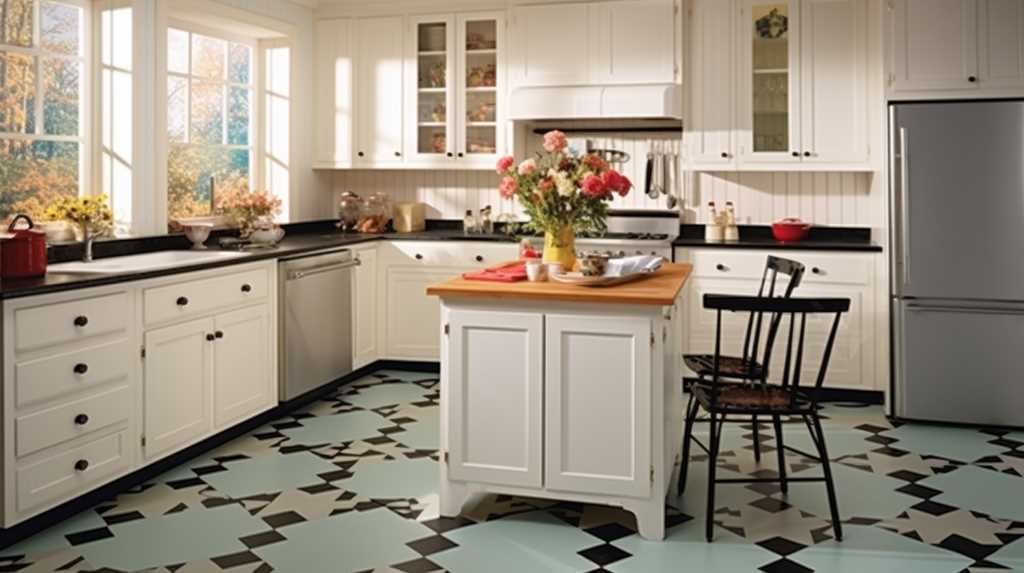
Linoleum, a timeless and durable flooring option, is perfect for older homes. Made from linseed oil and other natural components, it offers a classic and reliable choice. With a smooth and hard surface, linoleum can withstand the test of time and is more affordable than many alternatives. Additionally, its installation is relatively straightforward, making it a popular choice for those who prefer a DIY approach.
Linoleum is durable and offers various colours and patterns to complement your home’s unique aesthetic. Whether you prefer a traditional or modern look, there is a design that’s perfect for you. Furthermore, linoleum can be sanded and refinished if it gets scuffed or scratched, ensuring it maintains its appearance and extends its lifespan.
The easy maintenance of linoleum is another standout advantage. Its hygienic surface makes it ideal for areas like the kitchen and bathroom. Being water and stain-resistant, cleaning and maintaining linoleum is a breeze. This practical choice is especially beneficial for high-traffic areas in your home.
In addition to its durability and easy maintenance, linoleum is an environmentally friendly choice. Made from natural materials, it doesn’t release harmful chemicals into the air. Choosing linoleum for your flooring contributes to a healthier indoor environment and reduces your carbon footprint.
Linoleum is an excellent choice for residential properties and is also suitable for commercial spaces. It can withstand heavy foot traffic without showing significant signs of wear and tear. This makes linoleum a preferred option for restaurants, schools, and offices.
While linoleum is a fantastic flooring choice, ensuring proper installation is essential to maximize its benefits. Hiring a professional installer will ensure that your linoleum flooring is correctly laid down and will last for years. With its timeless appeal, durability, and easy maintenance, linoleum is a wise investment for any home or commercial space.
To summarize, here are the key points to remember about linoleum:
- Linoleum is a durable and affordable flooring option made from linseed oil, available in various colours and patterns.
- It can be sanded and refinished, making it a long-lasting choice for older homes.
- Linoleum is easy to clean and maintain, making it perfect for high-traffic areas in your home.
Luxury Vinyl Flooring: Melding Durability and Style for Every Room in Your Home
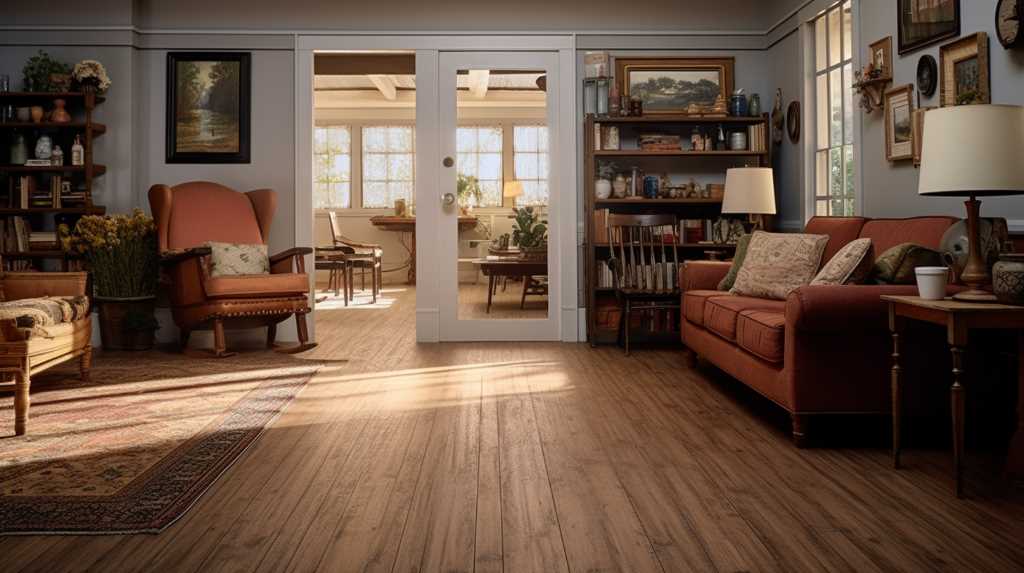
Luxury vinyl flooring offers the perfect combination of durability and style, making it an ideal choice for every room in your old home. Whether you’re renovating your kitchen, bathroom, or living room, luxury vinyl flooring provides a durable and long-lasting solution that can withstand a busy household’s daily wear and tear. With its stylish designs and realistic textures, luxury vinyl flooring can seamlessly blend with any traditional decor, adding a touch of elegance to your old home.
With technological advances, luxury vinyl flooring has become even more versatile and realistic-looking, mimicking the natural beauty of hardwood or stone at a fraction of the cost. Its water-resistant properties make it the perfect flooring option for areas prone to spills or moisture, such as kitchens and bathrooms. Additionally, luxury vinyl flooring is scratch-resistant, meaning you won’t have to worry about damage from pets or heavy foot traffic.
Installing luxury vinyl flooring is a breeze, thanks to its easy-to-install design. Whether you choose click-lock or glue-down installation, luxury vinyl flooring can be quickly and effortlessly installed, saving you time and money. Its low-maintenance nature also makes it a practical choice for busy homeowners, as it only requires regular sweeping and occasional mopping to keep it looking its best.
Here’s a summary of the key points about vinyl flooring:
| Vinyl Tile | Sheet Vinyl | |
|---|---|---|
| Durability | High | High |
| Cost | Affordable | Affordable |
| Ease of Care | Easy | Easy |
Why Luxury Vinyl is Ideal for Renovating Older Homes
Luxury vinyl flooring is an excellent choice for older homes due to its durability, water resistance, and versatility in mimicking natural materials. A 2024 study by the Eco-Flooring Project found that luxury vinyl is preferred by 40% of homeowners renovating historic properties. Canadian Home Style’s luxury vinyl collection offers the perfect blend of practicality and style, making it an ideal choice for those looking to modernize their older homes while preserving their unique character.
Installation Tips for Vinyl Flooring in Vintage Settings
Installing luxury vinyl flooring in vintage homes requires attention to detail. Ensuring a level subfloor and considering moisture barriers are crucial steps. The International Association of Certified Home Installers (2023) suggests using professional installation services for the best results in older homes. Canadian Home Style provides expert installation services, ensuring that your luxury vinyl flooring fits perfectly and enhancing your historic home’s aesthetic and value.
The Timeless Charm of Hardwood Flooring: Elevating Your Home with Solid Wood and Engineered Solutions
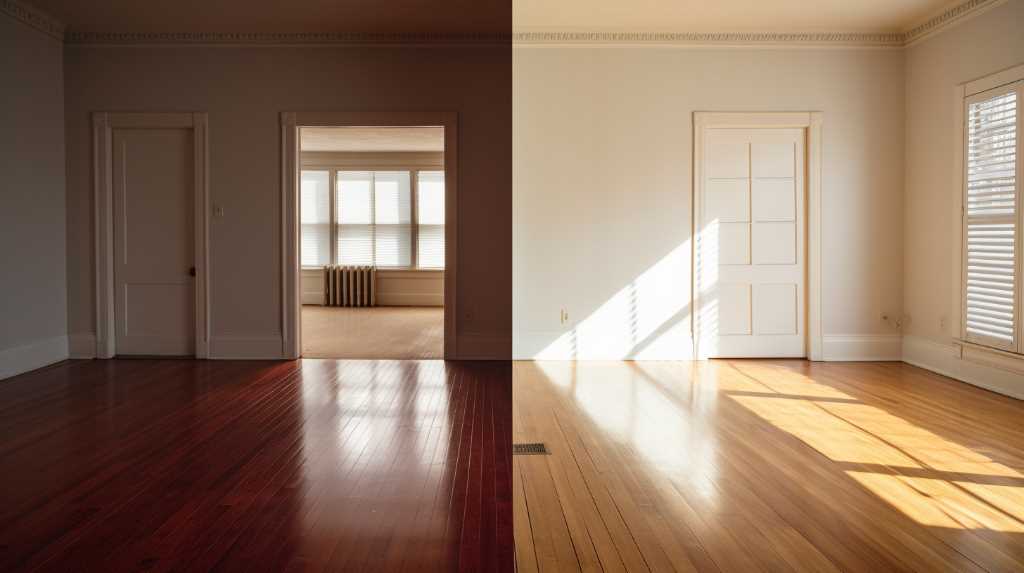
Hardwood flooring is a timeless choice for older homes due to its enduring elegance. With its warm and natural appeal, hardwood floors can enhance the character and charm of any historic property. The rich and luxurious textures of hardwood add a touch of sophistication and grandeur, creating a sense of timeless beauty. Moreover, hardwood floors are known for their durability and longevity, making them a practical and sustainable flooring option for older homes. Whether a Victorian-era house or a classic colonial, hardwood flooring seamlessly blends with the architectural style, creating a cohesive and visually stunning interior.
One of the main advantages of hardwood flooring for older homes is its ability to retain its beauty and value over time. Unlike other flooring options that may wear out or become outdated, hardwood floors age gracefully and gain character and charm. The natural patina and unique grain patterns that develop over the years create a sense of history and authenticity unmatched by any other flooring material. Hardwood floors can be refinished multiple times, allowing homeowners to restore their original beauty and adapt to changing interior design trends.
Hardwood flooring is a practical choice for older homes regarding maintenance and cleanliness. Unlike carpets or rugs that tend to trap dust and allergens, hardwood floors are easy to clean and hypoallergenic. Regular sweeping and occasional mopping is usually sufficient to maintain the cleanliness and shine of hardwood floors. Furthermore, hardwood is a natural and sustainable material, making it an environmentally friendly choice for homeowners conscious of their ecological footprint. Individuals can contribute to preserving natural resources and reducing their environmental impact by choosing hardwood flooring for their older homes.
Another advantage of hardwood flooring for older homes is its versatility and adaptability to various interior design styles. Whether the house has a traditional, transitional, or modern décor, hardwood floors can complement any style with its timeless appeal. From rustic wide-plank floors to sleek and contemporary engineered hardwood, there is a wide range of options, allowing homeowners to find a perfect match for their personal taste and interior vision. Moreover, hardwood’s natural colour variations and patterns can add depth and visual interest to the overall design scheme.
In addition to its aesthetic appeal, hardwood flooring also offers practical benefits for older homes. Hardwood floors are known for their durability and resilience, withstanding heavy foot traffic and daily wear and tear. This makes them ideal for older homes hosting family gatherings and social events. Furthermore, hardwood floors have excellent acoustic properties, reducing noise levels and creating a peaceful and serene living environment. Whether it’s a creaky Victorian mansion or a cozy Craftsman bungalow, hardwood flooring can enhance the overall functionality and comfort of the space.
Regarding resale value, hardwood flooring is a wise investment for older homes. Real estate experts say homes with hardwood floors sell faster and at higher prices than those with other flooring options. The timeless appeal and durability of hardwood flooring make it a sought-after feature among homebuyers, adding significant value to the property. Additionally, hardwood floors are considered a classic and desirable feature that can appeal to a wide range of potential buyers, ensuring a higher resale value and a faster return on investment.
The Timeless Appeal of Hardwood in Heritage Homes
Hardwood flooring is synonymous with timelessness, especially in heritage homes. Its natural beauty and ability to age gracefully make it a top choice for older properties. According to the National Flooring Association (2024), hardwood floors can increase a home’s value by up to 5%. Canadian Home Style’s premium hardwood collection embodies this enduring elegance, providing homeowners with a flooring solution that enhances their home’s historic charm.
Caring for Hardwood Floors in Older Properties
Maintaining hardwood floors in older homes requires special attention. Regular cleaning, avoiding excessive moisture, and periodic refinishing are vital to preserving their beauty and longevity. The Flooring Care Council (2023) advises homeowners to refinish hardwood floors every 7 to 10 years to maintain their lustre. Canadian Home Style offers high-quality hardwood flooring and expert advice on its upkeep, ensuring that your investment stands the test of time.
Laminate Flooring: Blending Affordability and Luxury in Your Home’s Living Spaces

Laminate flooring offers a cost-effective solution to homeowners looking to add elegance to their older homes. With its realistic appearance, laminate flooring can mimic the look of natural wood or stone at a fraction of the cost. This makes it an attractive option for those on a budget while achieving a high-end look. Also, laminate flooring is known for its durability and scratch resistance, making it perfect for busy households or high-traffic areas.
In terms of installation, laminate flooring is relatively easy to install, thanks to its click-lock system. This means homeowners can save on installation costs by using a DIY approach. Laminate flooring also requires minimal maintenance, as it is resistant to stains and does not need refinishing. Regular sweeping and occasional mopping are usually all needed to keep it pristine.
One of the advantages of laminate flooring is its versatility. It can be installed in any room of the house, including kitchens and bathrooms, as long as proper precautions are taken to prevent water damage. With technological advancements, laminate flooring comes in various styles and finishes, allowing homeowners to choose a look that complements their home’s existing décor.
Not only is laminate flooring budget-friendly and durable, but it also provides excellent value for the money. With its long lifespan and low maintenance requirements, laminate flooring is a cost-effective choice that can enhance the overall aesthetic appeal of older homes. Laminate flooring is a practical and stylish option for a complete home renovation or a simple room upgrade.
Laminate’s Versatility for Historical Home Aesthetics
Laminate flooring is a versatile option for historical homes, offering various styles and patterns that mimic natural materials. Its durability and ease of maintenance make it suitable for high-traffic areas in older homes. Floor Design Weekly (2024) noted that laminate flooring is increasingly popular among homeowners seeking cost-effective yet stylish solutions. Canadian Home Style’s laminate flooring collection offers the perfect mix of practicality and aesthetic appeal for any historic home renovation.
Maintenance and Longevity of Laminate in Older Homes
Ensuring the longevity of laminate flooring in older homes involves proper care and maintenance. Regular cleaning, using protective pads under furniture, and avoiding excess moisture are essential. According to the Flooring Longevity Report (2023), well-maintained laminate flooring can last up to 25 years. Canadian Home Style provides comprehensive guidance on maintaining laminate floors, helping homeowners preserve their beauty for years.
Avoiding Certain Flooring Materials
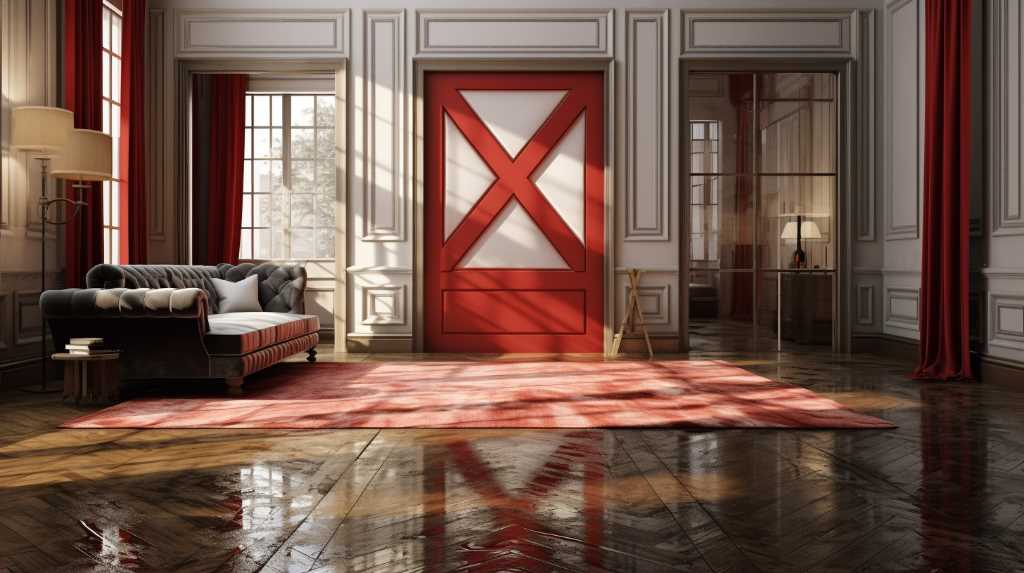
When choosing flooring for older homes, it’s crucial to prioritize safety and avoid materials that could create hazards. Despite its aesthetic appeal, natural stone may not be the best choice due to its complex and unyielding nature. Moreover, stone floors require regular maintenance and can become dangerous when wet, particularly for older adults with mobility issues. Similarly, tile floors, including ceramic or porcelain tiles, should be avoided as they can have complex and cold surfaces that may be uneven, posing a potential trip hazard. Additionally, the broad grout lines between tiles can increase the risk of accidents, making them less ideal for older homes.
Another set of flooring materials to steer clear of in older homes is linseed oil, wood, and linoleum. While these options can create a warm and inviting ambiance, they pose safety risks. Both linseed oil and wood can become quite slippery, especially when they come into contact with moisture, potentially leading to slips and falls. Likewise, linoleum flooring may not hold up well under radiant heating systems, compromising its durability and safety. By avoiding these materials, you can significantly enhance the safety and comfort of an older home.
To ensure the highest level of safety, a general rule of thumb is to avoid flooring materials with a coefficient of friction (COF) lower than 0.6. This coefficient, which measures the slip resistance of a surface, is a key indicator of a material’s safety. By opting for flooring materials with a higher COF, you can significantly reduce the risk of slips and falls, especially for older individuals who may be more susceptible to accidents.
Various flooring materials meet the criteria of being safe and visually appealing for older homes. Engineered hardwood, for instance, offers the beauty of natural wood while being more moisture-resistant, making it a safer option. Vinyl flooring, particularly luxury vinyl planks, can mimic the look of hardwood or tile without the safety concerns associated with those materials. Additionally, cork flooring provides a comfortable, eco-friendly choice with good slip-resistance properties. By exploring these alternatives, you can find a flooring option that combines safety with style for your older home.
To summarize, here are three types of flooring you should avoid:
- Natural stone and tiles can become extremely slippery when wet and have uneven surfaces.
- Linseed oil and wood, Linoleum flooring: These can be slippery and might not withstand radiant heating systems well.
- Rubber flooring: Although it offers good traction, it might not be compatible with radiant heating.
Frequently Asked Questions
What Is the Best Flooring to Put in an Old House?
When choosing the best flooring for an old house, there are several factors to consider. Historic preservation, budget, and climate impact are all important considerations. Hardwood is often a popular choice for its durability and period aesthetics. However, it’s essential to be aware of potential installation challenges, especially in older homes where structural integrity may be a concern.
What Type of Flooring Is Best for the Elderly?
When considering the best type of flooring for elderly individuals, it is essential to prioritize their safety and comfort. Slip-resistant materials such as carpet or rubber are highly recommended. These options provide traction to prevent falls and offer a cushioning effect for added comfort. In addition to slip resistance, other factors to consider include ease of maintenance, durability, and allergy-friendly options. When deciding, it is also worth considering aesthetics, noise reduction, budget, and energy efficiency.
What Classic Flooring Never Goes Out of Style?
Regarding timeless flooring options, several choices never go out of style. Vintage parquets, terracotta tiles, natural stone, cork, bamboo, classic hardwood, chic ceramics, durable linoleum, traditional terrazzo, and rustic slate all offer enduring elegance that stands the test of time.
What Is the Best Flooring for an Old House With Uneven Floors?
When choosing the best flooring for an old house with uneven floors, it’s essential to consider floor levelling techniques and subfloor repairs. Resilient flooring, such as cork, is a sustainable option that also helps reduce noise. While hardwood flooring is a classic choice, laminate flooring is a cost-effective alternative. Additionally, underlayment options and radiant heating can effectively address moisture issues.
Choose Canadian Home Style for your Vancouver flooring projects.
Canadian Home Style is your family-owned and operated flooring retailer with a showroom in North Vancouver, BC. We provide full-service commercial and residential flooring solutions across the Lower Mainland with an extended warranty. We are proud BC Floor Covering Association (BCFCA) and the National Wood Flooring Association (NWFA) members. In addition, we have won the Consumer’s Choice Awards back-to-back in 2021, 2022, 2023 and 2024 for our commitment to business excellence. We are considered the highest-rated flooring experts in Metro Vancouver. We pride ourselves on holding the highest standards in the flooring industry. We have a strict policy of “not selling or displaying any products we wouldn’t want in our homes to uphold our high standards.” Before we select a product to feature, we carefully assess product quality, off-gassing, warranties, and responsible sourcing. Book now to visit our North Vancouver flooring showroom; we can help you choose the perfect floor for your home or business.
Our mission is to help homeowners create beautiful homes that reflect their lifestyles while reducing energy consumption and conserving resources. We provide our clients with innovative products, services and education. Our vision is to become Canada’s leading sustainable flooring solutions provider. Our values include integrity, respect, honesty and transparency. These principles guide us as we strive to provide outstanding customer service.
We believe that our success depends on the success of our clients and their customers. We work hard to ensure our clients get the most out of their investments. Our team consists of highly skilled professionals who are experts in their field. They have years of experience working together and know what works and what doesn’t. They understand how to solve problems quickly and efficiently. We are committed to providing excellent customer service. We listen carefully to our client’s concerns and suggestions. We take these into account when planning and executing projects. We always strive to exceed expectations.
Services We Offer:
Main Areas of Service in British Columbia:
| Entity Name | Description | Source |
|---|---|---|
| Wood | A hard, fibrous material made by trees, widely used in construction, furniture making, and as a fuel source. | Source |
| Detergent | A chemical substance used to remove dirt and grease, commonly used in cleaning processes in various forms like powder, liquid, and gel. | Source |
| Hardwood | Wood from deciduous trees, known for its strength and durability, often used in high-quality furniture, flooring, and construction. | Source |
| Aesthetics | A branch of philosophy dealing with nature, art, beauty, and taste, focusing on the creation and appreciation of beauty. | Source |
| Lamination | A process of layering materials to create a composite material, often used in manufacturing for strengthening or decorating purposes. | Source |
| Mid-century Modern | An architectural, interior, and product design form that characterizes developments in mid-20th-century design, roughly from the mid-1930s to the mid-1960s. | Source |
| Ceramic | Inorganic, non-metallic solid materials that are subjected to high temperatures, used in a variety of products like tiles, pottery, and electronic components. | Source |
| Vacuum | A space devoid of matter or a device that creates a partial vacuum to suck up dust and dirt, mainly used in cleaning. | Source |
| Cork (Material) | A buoyant, elastic material obtained from the outer bark of the cork oak tree, widely used in products like wine stoppers, bulletin boards, and as an eco-friendly flooring option. | Source |
| Sealant | A substance used to block the passage of fluids through the surface or joints or openings in materials, often used in construction and manufacturing for sealing purposes. | Source |
| Quercus Suber | A medium-sized evergreen oak tree, primarily known for its production of cork. | Source |
| Linoleum | A durable, eco-friendly flooring material made from renewable materials like linseed oil, cork dust, and wood flour, known for its versatility and ease of maintenance. | Source |
| Pollen | Microscopic particles produced by the male part of a flower or by a male cone, often a cause of allergies in humans. | Source |
| Linseed Oil | Oil extracted from the dried, ripened seeds of the flax plant, commonly used as a drying oil in painting and varnishing. | Source |
| Do It Yourself | The method of building, modifying, or repairing things without the direct aid of experts or professionals, often associated with home improvement and maintenance activities. | Source |
| Laminate Flooring | A multi-layer synthetic flooring product fused together with a lamination process, typically designed to imitate wood or stone with a photographic applique layer under a clear protective layer. | Source |
| Wood Flooring | Flooring made from timber, either structural or aesthetic, available in various styles, colors, and species. | Source |
| Porcelain Tile | A type of ceramic tile known for its strength, moisture resistance, and low maintenance, commonly used in bathrooms and kitchens. | Source |
| Engineered Wood | Wood products made by binding or fixing strands, particles, fibers, veneers, or boards of wood together with adhesives or other methods, often used in flooring and furniture manufacturing. | Source |
| Porcelain | A ceramic material made by heating materials, generally including clay in the form of kaolin, in a kiln to high temperatures, known for its toughness, whiteness, and translucence. | Source |
| Humidity | The amount of water vapor in the air, affecting both weather conditions and indoor environmental quality. | Source |
| Coating | A covering that is applied to the surface of an object, usually referred to as the substrate, to improve its appearance, adhesion, or other properties. | Source |
| Fiberboard | An engineered wood product made by breaking down hardwood or softwood residuals into wood fibers, often used in cabinet making, shelving, and furniture construction. | Source |
| Adhesive | A substance capable of holding materials together by surface attachment, widely used in construction, manufacturing, and daily life. | Source |
| Polyurethane | A polymer composed of organic units joined by carbamate links, used in a wide range of materials including foams, elastomers, and coatings. | Source |
| Renewable Resource | Natural resources that can be replenished at a rate comparable to its consumption by humans, including solar energy, wind energy, and sustainable forestry. | Source |
| Forest Stewardship Council | An international organization that promotes responsible management of the world’s forests, providing certification for forest products. | Source |
| LL Flooring | A retail company specializing in hardwood flooring, offering a variety of flooring products including solid hardwood, engineered hardwood, bamboo, cork, and laminate flooring. | Source |
| Indoor Air Quality | The quality of the air within buildings and structures, important for health and comfort considerations. | Source |
| Vinyl Composition Tile | A finished flooring material used primarily in commercial and institutional applications, known for its durability and ease of maintenance. | Source |
| Custom Floor | The concept of designing and installing flooring that is uniquely tailored to the specific needs and preferences of the individual or organization. | Source |
| Varnish | A transparent, hard protective finish or film primarily used in wood finishing but also for other materials. | Source |
| Bleach | A chemical compound used to whiten or remove color, disinfect, and deodorize, commonly used in household cleaning and as a disinfectant. | Source |
| Tigerwood | A hardwood species known for its striking grain pattern and durability, often used in flooring, decking, and cabinetry. | Source |
| Floating Floor | A flooring installation method where the floor is not glued, nailed, or otherwise fastened to the subfloor, allowing for ease of installation and flexibility in different environments. | Source |







